On this Page ↓
What is a Dental Filling?
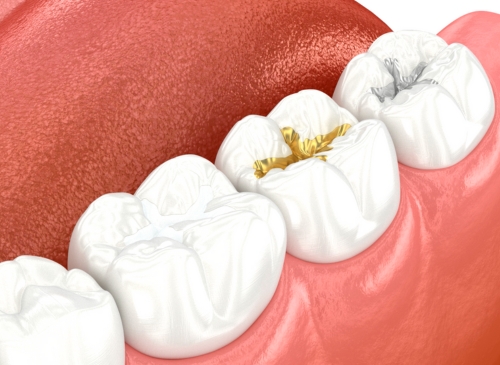
Dental Filling, also known as Tooth Filling or Cavity Filling, is a restorative dentistry treatment modality used to address tooth decay and structural damage issues. This procedure involves filling missing or decayed tooth structures with different materials. Tooth cavity treatment improves the function of the teeth, strengthens weakened teeth, and preserves tooth structure.
The tooth structure is usually destroyed due to tooth decay or trauma. A Dental Filling helps to fill this gap and protect it from further decay. It is also used to repair broken or cracked teeth that can wear off because of dental habits like teeth grinding and nail-biting.
Filling materials can include Composite, Ceramic, GIC, etc., used to even out tooth surfaces for better functionality, including biting or chewing.
Talk to an Expert
Before & After Picture Gallery
A Tooth-Coloured filling
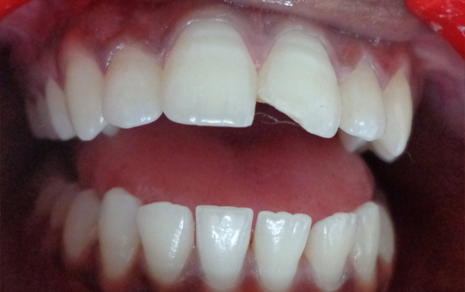

Silver Fillings replaced with Composite

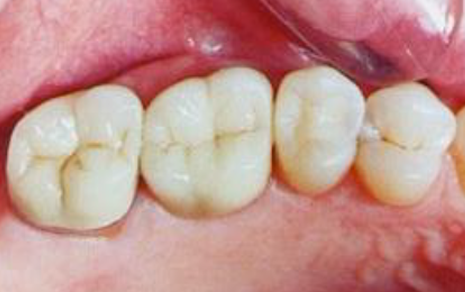
Anterior Decay

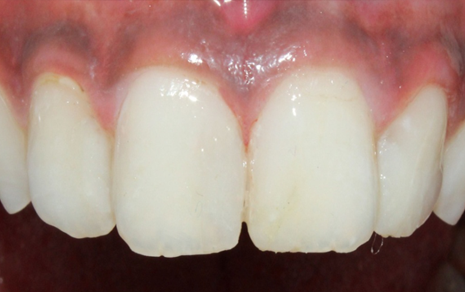
Broken Tooth

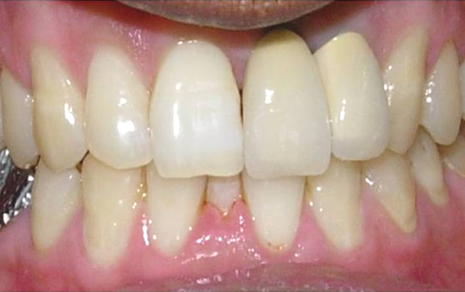
Types of Dental Fillings
Dental Fillings are of various types. The Filling to be used will depend upon the condition of decay and other factors, such as a person being allergic to a material. The different types of fillings available are:
1. Composite Fillings
Composite Filling also known as resin filling or tooth colored filling is the most preferred and recommended choice for restoration. These are made up of plastic and resin material.
A composite dental filling can be customized according to the shade of the Tooth and thus holds an added advanced go, having a natural appearance.
Apart from dental fillings, Composite material can also be used for:
- Broken Tooth
- Crowns
- Chipped Tooth
- Inlays
- Veneers etc.
The composite resin tooth filling lasts long and is aesthetically pleasing. They offer guaranteed for 10-15 years and are a cost-friendly option for teeth restoration.
2. Silver Amalgam Fillings
Silver Amalgam Filling is also a very popular type of Dental Amalgam Filling. Silver fillings contain an amalgam of:
- Tin
- Copper
- Zinc
- Liquid Mercury (Elemental)
These fillings are being discontinued because of potential harms, including:
- Silver fillings in the mouth can cause potential health issues
- Mercury can cause contamination to the environment
- Patients with a metal allergy can have a bad reaction to Alalgam
3. Ceramic fillings
The Ceramic Filling is made of Porcelain, which makes it solid and durable. It is also aesthetically pleasing, as it provides a natural appearance. This teeth filling cost a little more than the other because of the following reasons:
- High Durability
- Can resist Stains and Teeth Abrasion
- They are tooth-colored (looks more natural)
- Aesthetically Pleasing
4. GIC- Glass Ionomer Fillings
GIC Dental Filling is the type of Fillings using GIC (Glass Ionomer Cement) material made of Acrylic and Glass. GIC is a self-adhesive restorative material, that works very well in adult and pediatric dentistry.
GIC Fillings are usually recommended for:
- Temporary Fillings
- Baby Teeth
- Decay around Gumlines
It is used for baby teeth because it releases fluoride and protects it from additional decay. It also acts as a sealant to protect the teeth. The only drawback of GIC when compared to other materials is that they lack durability and strength.
When does one need Dental Filling?
There are many signs and symptoms where Teeth Filling can be required. A visible hole in the Tooth is a significant indicator of the need for a dental filling. The hole would be visible, or you could run your tongue over the teeth to determine it. Other symptoms and signs include:
- Persistent Toothache
- Dark Spots on the Tooth
- Food stuck between some regions of the teeth
- Chipped or Broken Tooth
- Sensitivity to hot and Cold food and beverage
- Single or Multiple Cavities
When experiencing any of the symptoms mentioned above, you may require teeth or dental Fillings. Your Endodontist will make the final decision after a thorough oral examination.
What should you expect in the procedure for Dental Filling?
Step 1: Tooth examination
The initial step in dental fillings is clinically examining the Tooth. The patient will either complain of Pain, Discoloration, or Sensitivity. The dentist will thoroughly examine the Tooth and take an X-ray if required.
Step 2: X-RAY and Choice of material
The dentist will then take an X-ray of the tooth. If the infection has reached the pulp, an RCT needs to be performed, otherwise a restoration will work. Learn more about Root Canal Treatment here.
If the infection has not reached the pulp, the dentist will go for a dental filling. Further, the dentist will discuss the restoration material best suited for the patient.
Step 3: Removal of Decay
The tooth decay removal procedure is usually done using a spoon excavator. A dental handpiece with burs removes the decayed portion of the Tooth. This high-speed drilling method effectively removes any decayed area and prepares the Tooth for filling.
Step 4: Filling using restorative material
After the decay removal, the dentist will insert the filling material into the space. Commonly used filling materials include GIC, Composite, Amalgam, Gold and Porcelain fillings, etc. For porcelain filling, the Tooth’s impression must be taken, which is then sent to the lab for preparation of inlays and onlays.
Step 5: Waiting for the Filling to set
The setting time for tooth filling depends on the type of material used. Composite Filling requires a Curing light to harden the material. Amalagam usually takes less time to set than Composite. The dentist will guide the patient on how much time they need to wait after the filling is done.
Step 5: Bite Adjustment
After the Tooth Filling is hardened, the dentist will place colored paper (aka articulating paper) into the patient’s mouth to remove any high spots that can cause problems in bite adjustment. These adjustments are necessary to ensure that the Filling is not uncomfortable and does not interfere with daily activities like biting and chewing.
Step 6: Polishing and Finishing
The final step in the dental filling procedure involves polishing the restoration. Specialized polishers will make the filling look and feel glossy. This quick and painless dental filling process leaves you with a beautifully restored tooth.
Price of Dental Filling in India
Dental Filling is an affordable and effective tooth decay treatment option for restoration. The cost of teeth filling starts from Rs. 990 only. The tooth filling cost can vary on various other factors, including:
- Location of the Dental Clinic (Prices across all 500+ Clove Dental Clinics are the same PAN India)
- Number of sitting required
- The condition of the Tooth and Cavity
- Type of material used for Tooth Filling
An estimated range of Dental Filling Cost / Teeth Filling Cost across Clove Dental Clinics based on different materials being used are provided below:
| Material | Starting Price |
|---|---|
| Composite | Starting at Rs. 990 |
| GIC | Starting at Rs. 990 |
| Nano Filling | Starting at Rs. 1490 |
| Inlay/Onlay (Metal) | Starting at Rs. 2790 |
Investing in a tooth filling to restore your teeth today might reduce your chances of needing more expensive procedures later.
Consequences of not getting a Dental Filling
If you have cavities or decayed teeth, it is essential to get them examined by the dentist and get teeth filling done at the earliest. This is because:
- The hard outer part or enamel, which is also the protective layer of the tooth starts decaying
- Once the enamel is damaged, it leads to exposed dentin causing Pain and Sensitivity
- The bacteria in your mouth will contact dentin, causing Infection
- Once the infection starts, you will feel sensitivity and want to complete Fillings
- If you skip this part and do not get the treatment done on time, the infection will reach the nerve, eventually damaging the Tooth, and then you need to undergo a Root Canal Treatment which will cost you more than fillings
- You are also at risk of the infection traveling to the adjacent Tooth, which makes it prone to decay
Post Treatment Care for Dental Filling
- You might feel soreness around your gum area; this will last only for a few days
- Avoid hard or sticky food for a few days
- If you have a habit of grinding your teeth, then make sure you use a mouthguard to protect your Filling
- If you feel sensitivity for too long or if your dental fillings come out, visit your Endodontist immediately
- Maintain a Good Oral Hygiene Routine like Cleaning, Brushing, Mouthwash & Flossing
FREQUENTLY ASKED QUESTIONS
1. How should I take care of my Dental Restoration?
You can take care of your fillings by following a simple oral hygiene routine, including brushing, flossing, and using a mouthwash. Keep food from accumulating near your Tooth Filling. Limit sugary and sticky items and visit your dentist for regular checkups.
2. Are there any Advantages of Composite over amalgam Filling?
Yes, there are certain advantages and disadvantages of various filling materials. For example, Composite is more aesthetically pleasing as it matches the Tooth’s shape but is slightly more expensive than other materials. On the other hand, Amalgam is more durable but not aesthetic.
3. What is the material of dental fillings?
- Gold and Porcelain
- Silver Amalgam – consists of mercury with tin, zinc, silver, and copper
- Composite Resin Fillings – consist of Tooth-colored plastic
- GIC – Contains Acrylic and Glass Material
4. Why do I feel pain around my Dental Filling?
Short-term sensitivity can be caused after the Filling, which will go away within a few days. If it doesn’t subside, you can visit your dentist.
5. What Are Indirect Fillings?
Indirect fillings are made of gold or porcelain. The two different types of indirect fillings include: Inlays and onlays.
6. Why or when would a Dental Filling need to be replaced?
Dental fillings should be replaced when they become different in color, making them aesthetically undesirable. They are also replaced in case of secondary tears that occur underneath the Filling. In some instances, Amalgam fillings can cause allergic reactions, so they should be replaced with other materials.
7. What’s it Like After Getting a Filling?
The patient may experience differences initially after getting a filling, but it will slowly subside away with time.
8. How long does a dental filling last?
Dental Fillings’ longevity depends on the material used and how well you care for them. Generally, they last 10 to 20 years.
9. Can a dental filling fall off?
Yes, but the chances are rare for teeth filling to fall off.
10. What to do if the dental filling comes out?
Visit your dentist as soon as your Dental Filling comes out. There might be increased sensitivity for a while.
11. How To Know That Dental Filling is Loose?
If the pain persists following a tooth filling procedure, your tooth filling might be loose. If discomfort occurs during meals, or a toothache seems never-ending, it’s likely the filling may come out.

Medically Reviewed
Last Reviewed by Clove Clinical Team on August 20, 2024 | Written by Dr. Shreya Singh
Learn more about TOOTH FILLING
- What are the benefits of Tooth Coloured Fillings?
- Deep Cavity Filling vs Root Canal: Understanding Your Options
- Cavities – Symptoms, Causes, Treatment
- Minimal Invasive Fillings with Nano Materials and Direct Bonding
- Never Ignore A Missing Tooth
People who viewed this page also visited
Searching for "Dental Fillings / Teeth Fillings near me"?
Clove Dental clinics are Available in 23 Indian Cities. Book an appointment at Clove Dental Clinics for the best dental treatments by expert dentists/orthodontists for Dental Fillings / Teeth Fillings at a reasonable cost. Select your city below to find the
Best Dental Clinics for
- Dental Fillings / Teeth Fillings in Delhi |
- Dental Fillings / Teeth Fillings in Faridabad |
- Dental Fillings / Teeth Fillings in Ghaziabad |
- Dental Fillings / Teeth Fillings in Noida |
- Dental Fillings / Teeth Fillings in Greater Noida |
- Dental Fillings / Teeth Fillings in Gurgaon |
- Dental Fillings / Teeth Fillings in Hyderabad |
- Dental Fillings / Teeth Fillings in Bangalore |
- Dental Fillings / Teeth Fillings in Pune |
- Dental Fillings / Teeth Fillings in Chandigarh |
- Dental Fillings / Teeth Fillings in Jaipur |
- Dental Fillings / Teeth Fillings in Jalandhar |
- Dental Fillings / Teeth Fillings in Vijayawada |
- Dental Fillings / Teeth Fillings in Amritsar |
- Dental Fillings / Teeth Fillings in Kakinada |
- Dental Fillings / Teeth Fillings in Ludhiana |
- Dental Fillings / Teeth Fillings in Panchkula |
- Dental Fillings / Teeth Fillings in Zirakpur |
- Dental Fillings / Teeth Fillings in Mohali |
- Dental Fillings / Teeth Fillings in Chennai |
- Dental Fillings / Teeth Fillings in Ahmedabad |
- Dental Fillings / Teeth Fillings in Visakhapatnam (Vizag) |
- Dental Fillings / Teeth Fillings in Navi Mumbai




 Call us: 9393553232
Call us: 9393553232